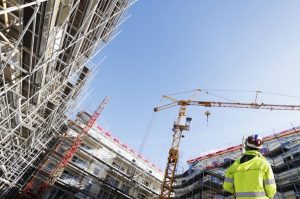Northern Powerhouse – Beyond the hype

CYNICS might dismiss the Northern Powerhouse idea as nothing more than political gamesmanship and civic boosterism.
Certainly it is both. The Tory Chancellor sees it as a way to curry favour with a solidly Labour region, attempting to take ownership of a strongly local agenda. And the concept fits squarely into North West leaders’ narrative that Greater Manchester plus surrounding regions can provide a counter-balance to the ever-strengthening South East.
Those of us who take a professional interest in regional development look past the hype and tend to support the Northern Powerhouse for sound economic reasons.
In technical talk, there are clear advantages of connected-ness and agglomeration. I can explain that with reference to two of Greater London’s most compelling attractions to business: its ease of access to global markets and its access to a broad and deep pool of technical and financial talent.
As much as the large northern cities, particularly Manchester, have developed on those two dimensions, they are not big enough on their own to compete with the South East. But linked together into a broad functional region, they are.
Let’s consider connectedness first. Today, Heathrow serves 180 destinations in 90 countries, 75 of which are not served by any other UK airport. That’s why two-thirds of the top UK companies have headquarters within 25 miles of the airport, and one-quarter of the UK’s exports to Brasil, Russia, India and China are sent from there.
Indeed, four of the five busiest airports in the UK are in Greater London (Heathrow, Gatwick, Stansted, and Luton). Even with all these resources, there is additional demand for runway capacity in the South East, which recognises the importance of that region as our major national hub.
The projected growth of Manchester Airport could siphon off some of the air traffic demand in the South East, especially if North-South road and rail connections are good (hence, business interest in HS2). But for Manchester Airport to develop into a strong secondary hub it has to continue to draw passengers and freight from across the north, and that will require the better road and rail connectivity that is part of the Northern Powerhouse proposal.
By agglomeration I mean the scale and scope economies that come from working as a single labour market, not as separate cities.
Why did Astra Zeneca move the bulk of its R&D operations from Alderley Park in Cheshire to Cambridgeshire? They were attracted to the density of engineers, technicians, and entrepreneurs who live within commuting range.
What motivated AZ motivates other companies, and then graduates from the very good Northern universities find themselves being pulled south for choice jobs.
The better transportation links proposed as part of the Northern Powerhouse will help such universities as Manchester, Liverpool, Lancaster Leeds, York, Newcastle, Durham and Sheffield (the N8 Research partnership) work more closely together.
The better transportation links among and between northern cities will also expand the labour pool of technical, managerial, and production workers for companies contemplating locating anywhere in the North.
Greater Manchester alone has a population of 2.7 million, but adding the rest of the North West and Yorkshire and Humberside swells the number to 12.5 million.
A company that needs specialised skills is surer to find them among that population, and if transport links are good those workers can commute from anywhere in the broad region.
So, the Northern Powerhouse is not about Greater Manchester alone, but about its greater connectedness to other northern sub-economies, creating a scale that will create a viable counterbalance to the South East.
Michael Luger is a professor at Manchester Business School, where he formerly served as director. He is also chairman of a local NHS Foundation Trust and a member of the board of the Office of Rail and Road.







